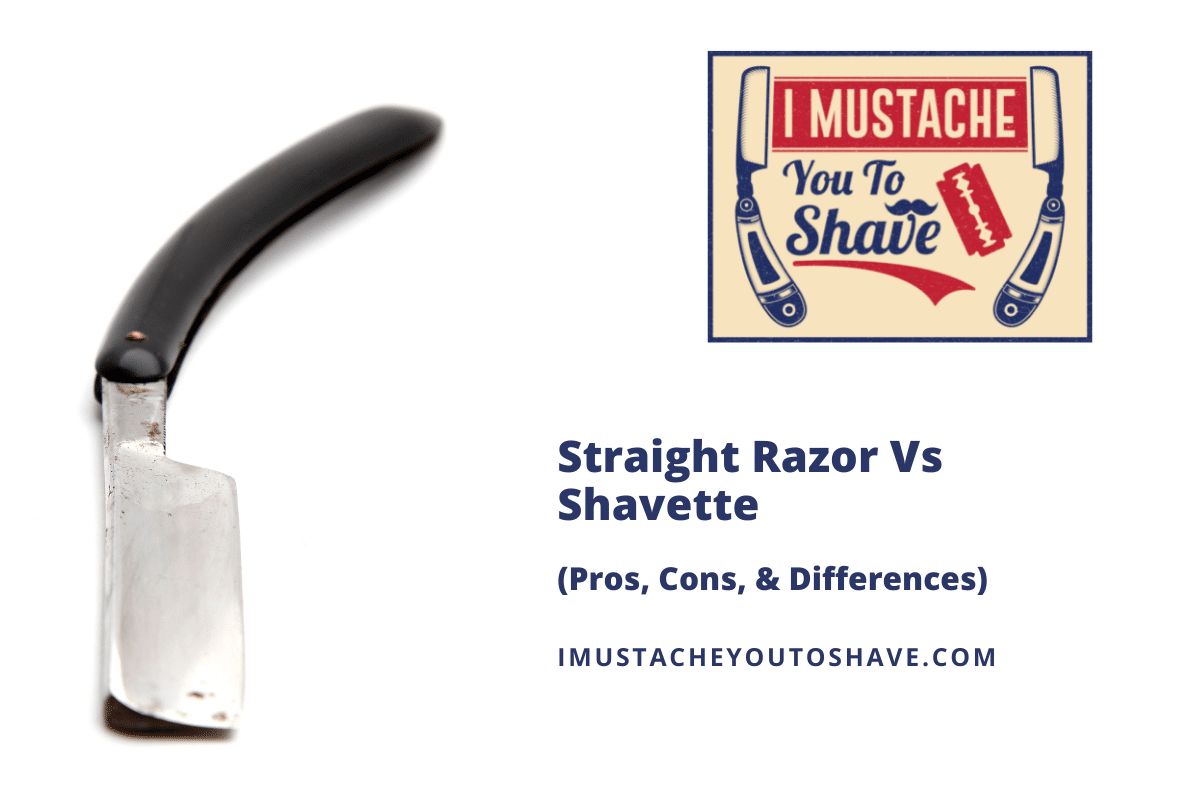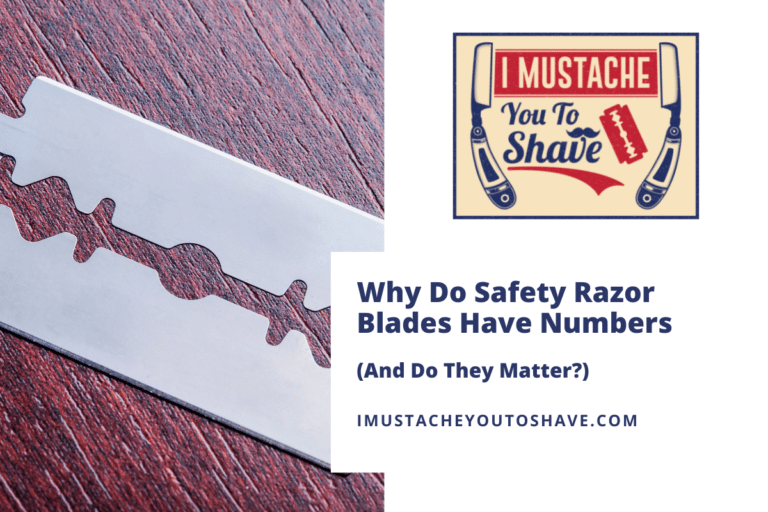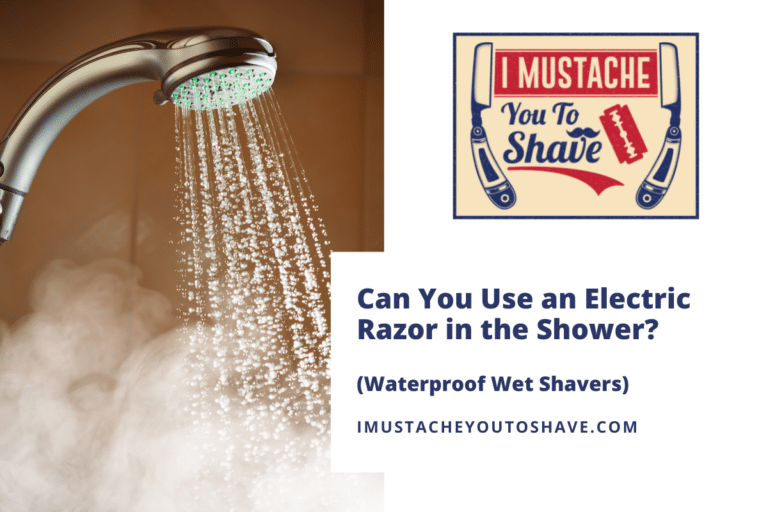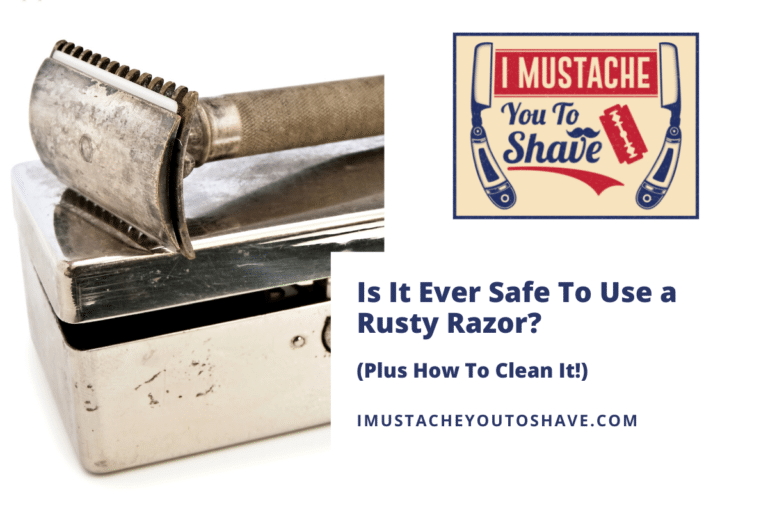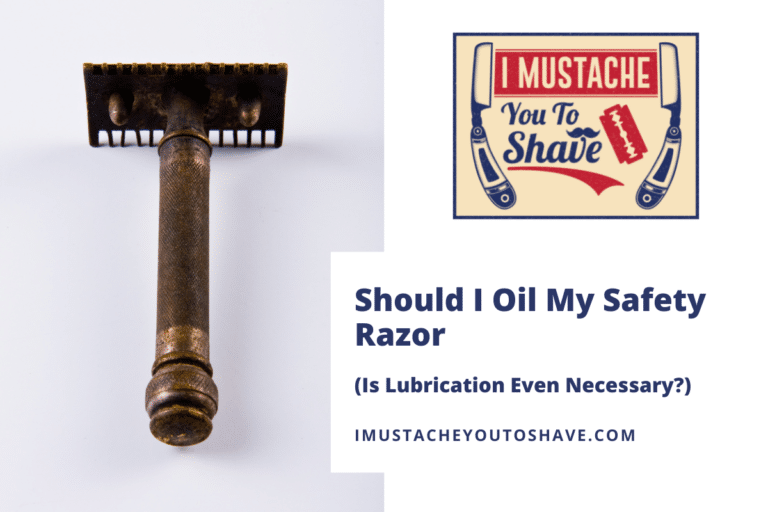Straight Razor Vs Shavette (Pros, Cons, & Differences)
Nowadays, most barbershops offering a men’s shave use a shavette instead of a traditional straight razor since they are more hygienic and the blades can be disposed of after each use. So what’s the difference between a shavette and a straight razor?
The difference between a straight razor and a shavette is the blade – straight razors have a solid blade that must be sharpened, honed, and stropped while shavettes use replaceable razor blades that are discarded when they become dull. Both straight razors and shavettes use a similar shaving technique with a fairly steep learning curve.
Keep reading to learn more about the similarities and differences between a straight razor and a shavette including the blades, handle, materials, cost-effectiveness, and skills required.
Differences between a straight razor and a shavette
The basic principle of a straight razor and a shavette is the same.
A shavette is the modern-day answer to a traditional straight razor. Unlike a straight razor, a shavette has a removable razor blade, which is easier to maintain and sanitize. It is also a little bit smaller and lighter weight than a typical straight razor, although the blades are of similar length. Both razors have a similarly steep learning curve.
Using a foldable blade to shave is almost as old as the practice of shaving itself. While it might seem obvious what the differences are as well, it helps to discuss the larger points.
The biggest differences between a straight razor and a shavette are:
- The blade
- The handle
- Materials used
- Price and long-term value
- Learning curve
Blade
One of the major differences between a shavette and a straight razor is the razor blade itself.
With a straight razor, the blade itself is an inextricable part of the razor system and requires regular maintenance, including stropping, honing, and sharpening. A shavette, on the other hand, features a reusable handle with a disposable blade, similar to the disposable cartridge in many modern razors.
A shavette’s removable blade is usually a double edge safety razor blade that has been cut in half, either by the manufacturer or the end-user. There are some shavette spines (the large metal piece the blade fits into) that have specialized blades built especially for them, but they’re usually very expensive and as such diminishes the purpose of a shavette in the first place.
The mechanism for removing and adding razor blades makes little difference in the use or maintenance of the shavette, but it is important to find a shavette that you’re confident the blade won’t slip out accidentally.
There are several ways the disposable blades are attached to the shavette, which can inform your decision about getting one. Most shavettes have a clasp that the blade is fixed with, but others include a pinching mechanism that locks the blade or an insert that comes out of the center of the spine to slide the removable blade into place.
Is a shavette sharper than a straight razor?
Straight razors have to be maintained in their sharpness, requiring skill in grinding and sharpening, and the associated tools, which can be pricey upfront and require no small amount of practice. This leads to a sharp tool but not as sharp as an industrialized blade.
The razor blades in shavettes are sharper than straight razors because of the way they are manufactured. The industrial process of creating chromatic steel makes for a significantly sharper blade. Additionally, most users throw their blade away after a week of shaving and replace it, ensuring that they are always using a fresh blade.
It is possible to sharpen disposable razor blades after you’ve used them, but if you don’t have the tools or the know-how, there’s no problem with tossing your razor blades to be recycled.
Length
As it happens, the effective cutting edge of a straight razor and that of a shavette is pretty much the same. That said, a straight razor has a longer surface area which makes for easier strokes on larger areas, but may be difficult for smaller ones, like above the lip.
Because the size of your shavette blade area is dictated by the standard length of a razor blade, which is shorter than a straight razor, there’s no way around requiring extra strokes to shave larger areas, which can lead to a higher risk of razor burn. That said it is easier to have finesse with a shavette in some of the harder-to-reach places while wet shaving.
Another factor to consider is that with a shorter blade you can see better where you’re going with a shavette than a straight razor since you don’t have the entire length of the blade to contend with while shaving.
Handle
The handles of shavettes and straight razors are varied and diverse, but the key difference is that straight razors have heavier handles.
The important factor to consider when looking at shavettes is the grip and length. Without proper grip and length, the difficulty curve of using a shavette increases exponentially.
When purchasing a shavette, make sure that the handle won’t slip out of your hand during a wet shave by making sure the length fits in your hand and feels natural. You also want to be sure that if the handle is made out of a material that’s typically slippery when wet, like plastic, that it has grooves or some other texture to improve grip.
Also, consider the folding mechanism of the shavette handle and spine. If made of metal it would warrant keeping an eye on it for rusting.
Materials
Straight razors are typically made of a heavier, thicker metal, whose quality stainless steel makes for a very long-lasting blade.
Because of their weight and quality metal, straight razors vibrate less when shaving with them, meaning they don’t typically jump when they meet stubble.
The razor blades used in shavettes are typically made of a lesser quality coated steel and don’t have the weight of straight razors to avoid vibrating, which can lead to razor burn.
It’s possible to find some higher-quality razor blades than you’ll find online on big platforms, but you’ll be hard-pressed to find something that matches the quality and weight of a straight razor.
Price and long-term value
While the upfront cost of a quality shavette or straight razor can be a bit steep, the long term benefits of buying new razor blades for shavettes far outweighs some of the ease of buying new disposable cartridges.
Specifically, in the fact that razor blades are cheaper and are recyclable since they’re strictly metal. The same applies to straight razors since there are hardly any materials disposed of at maintenance.
You can find shavettes for relatively cheap online and in small drug stores everywhere. Additionally, the cost of replacement razor blades is usually inexpensive as well, especially if you buy in bulk.
That said, you don’t want to skimp too much on quality as it might make for an ineffective shave at best and a harmful shave at worse. Because you have to purchase new razor blades regularly, the upfront cost of a shavette can be spread out over time. A typical quality shavette can be anywhere between $15 and $50.
The upfront cost of a straight razor can be expensive in comparison, but there’s no need to replace the blade, so you will save money over time by not having to purchase more. Quality straight razors are typically in the $100-$150 range. However, it’s important to remember that a straight razor requires significant maintenance, which requires tools and materials as well.
After 3 or 4 shaves the straight razor needs to be aligned again, which is done by stropping with a length of leather called a strop.
Learning curve
As mentioned before there is a bit of a difference in the learning curve between a shavette and a straight razor, chiefly because of the length and weight of the metal used. Most experts suggest that because the skill required to shave with a shavette is so high, that it might turn a user off from the practice pretty quickly, so it might not be a good first try.
Many folks start with a straight razor to get used to the motion of wet shaving and because it has a lower risk of causing razor burn. Then once users have the practice, they’ll go down to shavettes for ease of maintenance.
Some decent-quality straight razors are only around $30 that you can purchase to practice with and get used to the idea before going for a shavette.
Additionally, if you’re simply looking for a close shave, a safety razor is a fantastic option that offers less risk of injury without sacrificing the quality shave.
Should you start with a shavette?
Before we get into the pros and cons I do want to make something very clear.
While similar, shavettes and straight razors should be treated as two separate tools and they will require a slightly different technique to master. Further, I personally think that shavettes are a bit more dangerous to use than straight razors because their edge typically ends up being much sharper.
Keep in mind that safety razors were invented to make shaving SAFER and a big part of this innovation was finding a way to guard the face against errant nicks and cuts from the traditional straight razor.
Are traditional straight razors better than shavettes?
If you’re trying to decide between a straight razor and a shavette, ultimately the decision is subjective, as there’s no right answer except for what works for you. That said, let’s weigh out the pros and cons to help inform that decision.
Straight razors
Straight razors are ideal for men who are looking for a fine, high-quality shaving piece and are willing to put in the time to maintain it properly.
Pros
- Better quality steel
- Longer blade
- Weight helps avoid razor burn
- Environmentally friendly
- Economical
Cons
- High cost upfront
- Steep learning curve in shaving and maintenance
- Requires maintenance with extra tools and materials
- Risk of nicks, cuts, and scratches is increased
Shavettes
Shavettes are a good choice for men who have mastered the straight razor, but who are looking for a more sanitary option that doesn’t require regular maintenance.
Pros
- Cost effective, both in blades and in handles
- Environmentally friendly
- Improved hygiene
- No need for stropping, honing, or any typical maintenance of straight razors
- Low impact on space required
Cons
- Blades are not as quality, increasing risk of razor burn
- Requires long term purchase and storage of blades
- Steep learning curve that requires a lot of practice
- Some stigma attached to use as being perceived as unmanly in comparison

